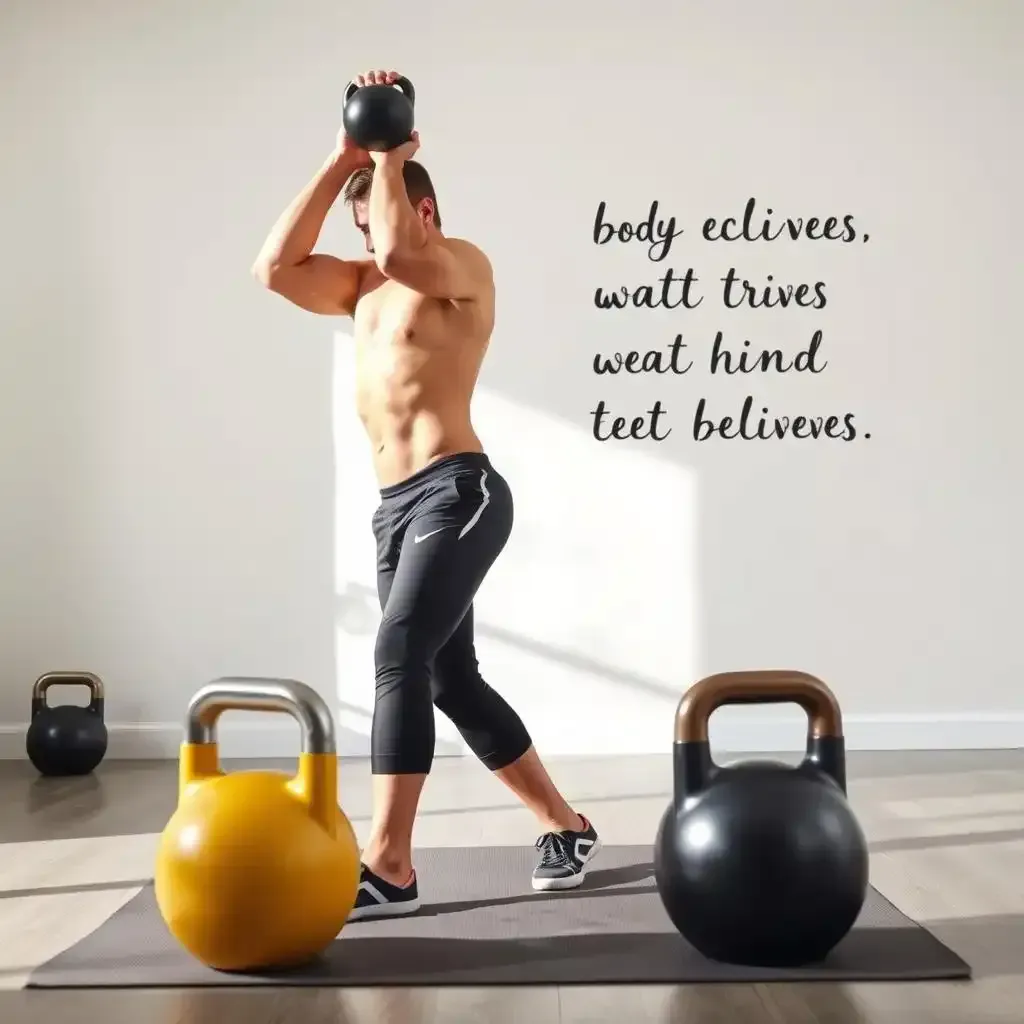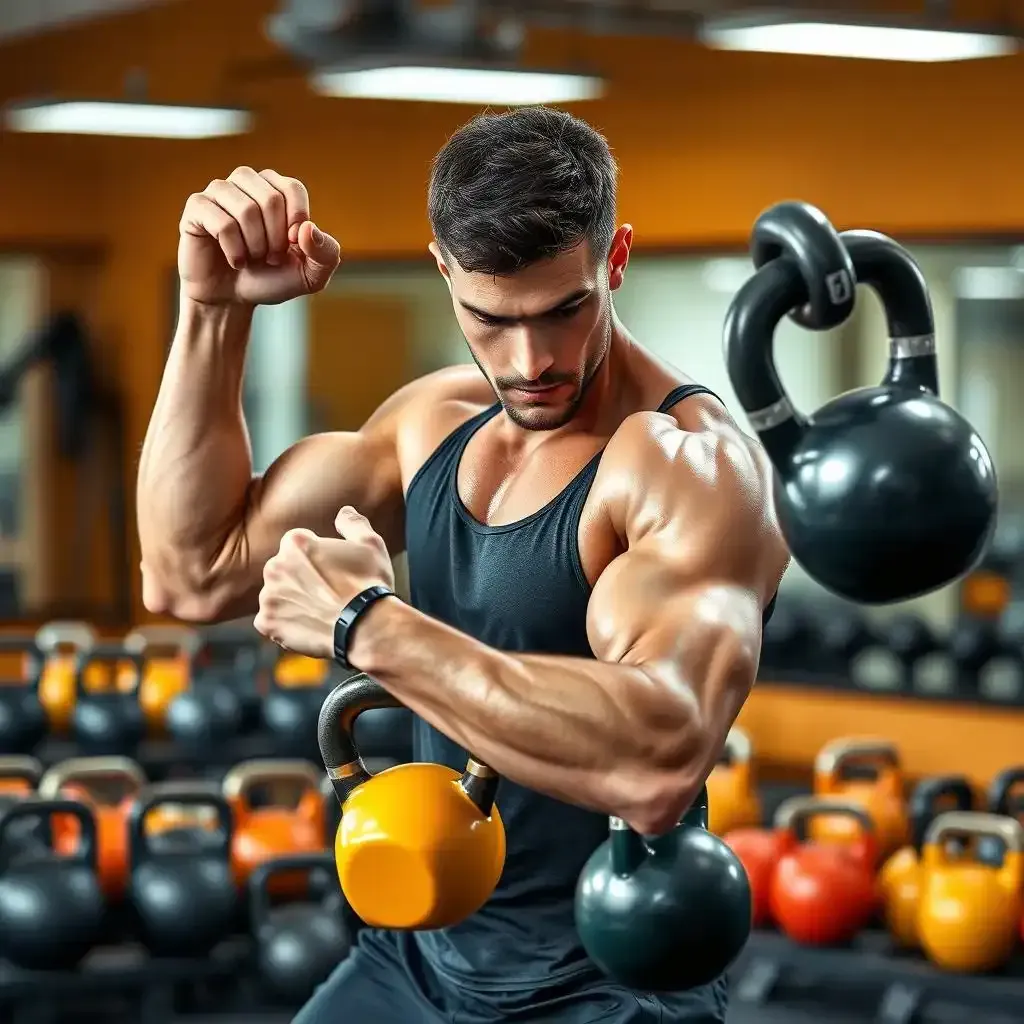Table of Contents
So, you're thinking about trying kettlebell workouts? Smart move! Kettlebells are this amazing tool that can help you get stronger, fitter, and maybe even a little bit cooler. They're like magic weights that work your whole body at once, not just your biceps. Think of them as a super-efficient way to get a really good workout. This kettlebell workouts 101 guide from kettlebellworkout.homes is your friendly, no-nonsense introduction to the world of kettlebells. We'll cover everything from choosing the right weight to mastering basic moves and creating a workout plan that actually fits your life. Forget those confusing fitness magazines and complicated workout videos; we're keeping it simple, fun, and effective. Get ready to let loose your inner powerhouse!
Kettlebell Workouts 101: Getting Started

Kettlebell Workouts 101 Getting Started
So, What *Are* Kettlebells Anyway?
Imagine a cannonball with a handle. That's basically a kettlebell! They're not just fancy weights; they're tools that make your muscles work in awesome, unexpected ways. Think of a regular dumbbell – you mostly lift it straight up and down. A kettlebell? You swing it, you press it, you snatch it...the possibilities are endless, and your muscles will *love* the challenge. It's like a full-body workout packed into one little, heavy ball. My first time using one, I felt like a total klutz, but after a few sessions, I got the hang of it, and I was hooked! It's a super fun way to exercise, and you'll see improvements pretty quickly. Ready to give it a try?
Finding Your Perfect Kettlebell
Picking the right kettlebell is crucial. Too light, and you won't get a good workout. Too heavy, and you risk injury. Start with a lighter weight – you can always increase the weight as you become stronger. A good starting point is usually 10-15 pounds for women and 15-25 pounds for men. But don't worry too much about the numbers; listen to your body! If an exercise feels too easy, go up in weight. If it feels too hard, go down. Remember, it's all about finding what works best for *you*. Check out this guide for more info on choosing your kettlebell weight!
Your First Kettlebell Workout: Small Steps, Big Results
Don't try to become a kettlebell champion overnight. Start slow and steady, focusing on perfect form. A great beginner routine might include just two or three exercises, repeated for a few sets of 10-12 repetitions. Remember, quality over quantity! Proper form prevents injuries and helps you get the most out of your workout. For example, start with the kettlebell swing – it's a fantastic full-body exercise that's relatively easy to learn. Then, maybe add some simple rows or goblet squats. Once you've mastered those, you can add more challenging exercises. Want more ideas for easy kettlebell exercises? See our post on simple beginner exercises!
- Find a kettlebell that feels comfortable and manageable.
- Start with a few basic exercises (like swings and squats).
- Focus on correct form. It's more important than how many reps you do.
Exercise | Sets | Reps |
|---|---|---|
Kettlebell Swing | 3 | 10-12 |
Goblet Squat | 3 | 10-12 |
Kettlebell Workouts 101: Mastering the Basics

Kettlebell Workouts 101 Mastering The Basics
The Kettlebell Swing: Your New Best Friend
Okay, let's talk about the kettlebell swing. It's the king of kettlebell exercises, and for good reason! It's surprisingly simple to learn, yet it works your entire body – legs, core, back, even your arms get a workout. Think of it like this: it's a powerful hip hinge, not just an arm exercise. You're using the momentum of your hips to swing that kettlebell. I remember my first swing; I felt ridiculously clumsy. My form was all wrong, and I nearly dropped the weight a few times. But I stuck with it, and after a few weeks, I felt like a pro! The key is to focus on your form. Watch videos, practice in front of a mirror, and don't be afraid to start with a lighter weight. Mastering the swing is like unlocking a secret code to a whole new level of fitness. You'll be surprised how much stronger and more coordinated you'll become. Want a step-by-step guide on how to perfect your kettlebell swing? Check out our kettlebell basics guide!
- Start light. You can always add weight later.
- Focus on hip movement, not just arm strength.
- Watch videos and practice your form carefully.
Beyond the Swing: Exploring Other Kettlebell Moves
Once you've got the swing down, the world of kettlebells opens up! There are tons of other awesome exercises you can try. Goblet squats are a fantastic way to build leg strength and improve your balance. Kettlebell rows are great for your back and biceps. And don't forget about kettlebell presses – a killer upper-body workout. Remember, you don't need to do everything at once. Start with a few exercises you enjoy, and gradually add more as you get stronger. I started with just swings and squats, and slowly added rows and presses. It's a progression, not a race! Want some more ideas for exercises to add to your routine? We've got a great guide on starter kettlebell exercises you can check out.
Exercise | Muscles Worked | Difficulty |
|---|---|---|
Kettlebell Swing | Full Body | Beginner |
Goblet Squat | Legs, Core | Beginner |
Kettlebell Row | Back, Biceps | Intermediate |
Kettlebell Press | Shoulders, Triceps | Intermediate |
Choosing the Right Kettlebell Weight and Exercises
Finding Your Perfect Kettlebell Weight
Picking the right kettlebell weight is like finding the perfect pair of shoes – too small, and you'll be uncomfortable. Too big, and you'll trip over your own feet! Seriously, starting with a weight that's too heavy is a recipe for disaster. You'll not only struggle to do the exercises correctly, but you'll also increase your risk of injury. I remember my first time; I was so eager to look like a pro that I grabbed a 25-pounder. Let’s just say I spent more time on the floor than actually swinging the kettlebell. It was humbling and definitely not fun. Start light, maybe 10-15 pounds if you're a beginner. It's better to feel challenged but in control than to constantly struggle. You can always increase the weight as you get stronger. Think of it as a gradual climb, not a sprint to the top. Check out our guide on for more detailed advice.
- Start with a lighter weight you can comfortably handle.
- Gradually increase the weight as you get stronger.
- Prioritize good form over heavy weight.
Mastering the Moves: Exercises for Beginners
Once you've got your kettlebell, it's time to learn some basic moves. Don't try to do everything at once! Focus on mastering a few key exercises before moving on to more advanced ones. The kettlebell swing is a fantastic place to start—it's a full-body workout in itself. Next, I'd suggest goblet squats (holding the kettlebell close to your chest). They're great for building leg strength and improving your balance. After that, you could add some simple rows for your back. Remember to watch videos and practice your form in front of a mirror. It's way better to do fewer reps with perfect form than tons of reps with sloppy form. Sloppy form is how you get hurt, and nobody wants that. For more exercise ideas, check out our page on .
Exercise | Muscles Worked | Difficulty Level |
|---|---|---|
Kettlebell Swing | Full Body | Beginner |
Goblet Squat | Legs, Core | Beginner |
Kettlebell Row | Back, Biceps | Beginner/Intermediate |
Building Your Own Kettlebell Workout Routine
Designing Your Perfect Kettlebell Workout
Okay, so you've mastered a few basic moves – congrats! Now it's time to build your own killer workout routine. Think of it like creating a delicious pizza – you start with a solid base (warm-up!), then add your favorite toppings (exercises!), and finish with a tasty sprinkle of cool-down. Don't go crazy trying to do everything at once. Start with a simple routine, maybe three exercises, 2-3 sets of 10-12 reps each. I started with just kettlebell swings, goblet squats, and rows. It felt manageable, and I could focus on getting my form right. Remember, it's not about how many exercises you do, but how well you do them. And if you're feeling particularly ambitious, you can always add an extra set or two as you get stronger. Need some inspiration for building your own routine? Check out our guide on beginner kettlebell routines!
- Choose 2-3 exercises you enjoy.
- Start with 2-3 sets of 10-12 reps.
- Focus on proper form before increasing weight or reps.
Adding Variety and Challenge to Your Routine
Once you're comfortable with your initial routine, it's time to spice things up! Adding variety keeps your workouts interesting and challenges your body in new ways. Think about adding different exercises to target different muscle groups. Maybe you can try kettlebell presses for your shoulders or lunges for your legs. You could even throw in some Turkish get-ups for a serious full-body challenge (those are tough!). You can also play with the number of sets and reps, or try different variations of the exercises you're already doing. Don't be afraid to experiment and find what works best for you. The most important thing is to keep it fun and challenging. Need a few more exercise ideas? Our guide has you covered.
Day | Exercise | Sets | Reps |
|---|---|---|---|
Monday | Kettlebell Swings | 3 | 15 |
Monday | Goblet Squats | 3 | 12 |
Wednesday | Kettlebell Rows | 3 | 10 |
Friday | Kettlebell Presses | 3 | 10 |
Final Thought
Remember, consistency is key! Start small, focus on proper form, and gradually increase the challenge. With a little dedication and the right guidance, you'll be amazed at what you can achieve with kettlebells. So grab your kettlebell, and let's get swinging!